Why Nepal for Climbing in Nepal for Beginners?
Nepal stands out as a premier destination for beginner climbers for several compelling reasons. Here’s why choosing Nepal for your introductory climbing experience is a wise and rewarding decision:
-
Diverse Range of Peaks: Nepal is home to the world-famous Himalayas, which include not only some of the highest peaks in the world but also a variety of more accessible mountains that are ideal for beginners. Peaks like Island Peak, Mera Peak, and Lobuche East offer feasible challenges that are perfect for those new to mountaineering, providing an environment where beginners can safely learn and practice essential climbing skills.
-
Structured Learning Opportunities: Nepal offers numerous mountaineering courses that are specifically designed for beginners. These programs often include both theoretical and practical mountaineering skills, from basic climbing techniques and safety measures to more advanced high-altitude tactics. These courses are taught by experienced mountaineers who are familiar with the unique challenges of the Himalayas.
-
Professional and Experienced Guides: The availability of highly skilled and experienced guides in Nepal is a significant advantage. These guides not only provide instruction and ensure safety but also help with acclimatization and managing the physical challenges of climbing at high altitudes. Their expertise is invaluable for beginners, who can learn a great deal from their knowledge and experience.
-
Ideal Climbing Conditions: Nepal has two primary climbing seasons—spring and autumn. These seasons offer stable weather conditions, relatively clear skies, and moderate temperatures, making them ideal for mountaineering. Good weather is crucial for beginners, as it allows for safer and more enjoyable climbing experiences.
-
Cultural Immersion: Climbing in Nepal also provides an opportunity to immerse oneself in the rich Nepalese culture. Many climbing routes pass through villages and towns where climbers can interact with the locals and experience their traditions, food, and hospitality. This cultural exposure adds a unique and enriching layer to the climbing experience.
-
Scenic Beauty: The routes to many of the beginner-friendly peaks pass through some of the most stunning landscapes in the world, including lush forests, rhododendron-covered hills, and vistas of towering snow-capped mountains. The natural beauty of these trails can make the strenuous journey more enjoyable and memorable.
-
Cost-Effectiveness: Nepal offers a range of climbing experiences that can accommodate various budgets. Many beginner climbs are more affordable compared to other high-altitude expeditions around the world, making it accessible for more people.
-
Community and Support: The climbing community in Nepal is vibrant and supportive. Beginners will find themselves surrounded by like-minded individuals from around the world, providing a network of support, encouragement, and camaraderie.
These factors make Nepal an excellent destination for beginners to start their climbing adventures. The combination of accessible peaks, expert guidance, optimal climbing conditions, and a supportive environment helps ensure a safe and fulfilling experience.
Easiest Mountains to Climbing in Nepal for Beginners
For beginners looking to experience the thrill of high-altitude climbing in Nepal without the technical challenges of the more formidable peaks, there are several mountains that provide an ideal starting point. Here are some of the easiest and most rewarding mountains to climb for beginners in Nepal:
-
Island Peak (Imja Tse): At 6,189 meters, Island Peak is one of the most popular trekking peaks in Nepal due to its relatively straightforward climb and its role as a good preparation for higher expeditions. The climb includes some basic snow climbing and use of crampons and ropes, making it a great introduction to Himalayan mountaineering.
-
Mera Peak: Standing at 6,476 meters, Mera Peak is the highest trekking peak in Nepal. It's renowned for providing climbers with spectacular panoramic views of five 8,000-meter peaks, including Everest, Cho Oyu, and Lhotse. The route to Mera Peak is more about endurance than technical difficulty, requiring only basic mountaineering skills, which makes it suitable for beginners.
-
Lobuche East: With an elevation of 6,119 meters, Lobuche East offers a more challenging experience than Island or Mera Peaks but is still manageable for those with basic climbing skills. The climb includes a mixture of steep and icy sections that require some technical skills.
-
Pokalde Peak: At 5,806 meters, Pokalde is one of the less demanding peaks near Everest. The peak can be climbed in a very short period of time from the Everest Base Camp trek's route, involving minimal technical climbing.
-
Pisang Peak: Reaching 6,092 meters, Pisang Peak provides an exciting introduction to alpine climbing in the Annapurna region. The climb involves a mix of trekking and climbing on snow, offering a manageable challenge for those new to the sport.
-
Yala Peak: Located in the Langtang region, Yala Peak stands at 5,520 meters and is an excellent choice for beginners. The climb is non-technical, offering a straightforward ascent that allows climbers to enjoy the experience and the scenery without the stress of more difficult climbs.
-
Tent Peak (Tharpu Chuli): At 5,663 meters, Tent Peak in the Annapurna Sanctuary is another popular choice for those new to climbing. It provides spectacular views of the Annapurna range and involves basic snow climbing, making it a good peak for beginners.
-
Chulu Far East: Reaching an elevation of 6,059 meters, Chulu Far East offers a more remote and less frequented climbing experience in the Annapurna region. It is perfect for those looking to experience a less crowded climb and involves straightforward climbing suitable for those with basic skills.
These peaks are chosen for their lower difficulty levels, stunning views, and the opportunity they offer beginners to gain experience in high-altitude climbing. With the right preparation, guidance, and respect for the mountains, these climbs can provide a fulfilling and transformative experience.
Island Peak (Imja Tse)
Island Peak, also known as Imja Tse, is one of the most popular climbing destinations for novice mountaineers in Nepal. Standing at an elevation of 6,189 meters (20,305 feet), it is located in the Khumbu region and offers a rewarding introduction to high-altitude expeditions. Its popularity is due in part to its relatively moderate climb and its location near the Everest Base Camp, making it an excellent addition to a trek in the Everest region.
.jpg)
-
Overview: Island Peak gets its name from its appearance as an island in a sea of ice when viewed from Dingboche. As part of the south ridge of Lhotse Shar and situated between the Lhotse and Imja glaciers, it provides stunning views of the Himalayan vistas, including Nuptse (7,879m), Lhotse (8,501m), Lhotse Middle Peak (8,410m), and Lhotse Shar (8,383m).
-
Climbing Route: The typical approach to Island Peak begins with a trek to Everest Base Camp, which helps with acclimatization, followed by a turn towards Imja Valley. The actual climb of Island Peak starts at Base Camp located at around 5,200 meters, followed by a trek to High Camp at about 5,600 meters, which is sometimes used to shorten the summit day. The climb involves crossing a semi-steep glacier, navigating crevasses, and a steep snow and ice slope leading up to the summit ridge. This portion can be challenging and requires the use of climbing harnesses, ropes, and ice axes. The final climb to the summit involves a narrow ridge, which demands good balance and careful footwork.
-
Difficulty: Island Peak is considered a moderate climb. It is not technically very challenging, but it does require a good level of physical fitness and some basic alpine climbing skills, particularly in using ice axes and crampons. The high altitude also means climbers need to be well-acclimatized to prevent altitude sickness.
-
Preparation and Safety: Climbers should have basic training in ice climbing and glacier navigation. Many climbers opt to take part in a short training course at base camp, where they are taught how to properly use their equipment on the glacier. Safety is paramount, and it's important that climbers are always aware of weather conditions and altitude sickness symptoms.
-
Why Climb Island Peak?: Climbing Island Peak is an excellent way for those with little to no mountaineering experience to gain insight into what is involved in a Himalayan expedition. The journey not only tests your physical and mental stamina but also immerses you in the stunning natural beauty and cultural richness of the Khumbu region.
For anyone looking to start their mountaineering journey, Island Peak offers a blend of accessible adventure and the raw beauty of the Himalayas, making it a memorable and rewarding challenge.
Mera Peak
Mera Peak is renowned as the highest trekking peak in Nepal, reaching an elevation of 6,476 meters (21,247 feet). Located in the Solu-Khumbu region, it stands slightly off the beaten track, providing a quieter, more solitary climbing experience compared to the busier trails to Everest or Annapurna. Mera Peak is an attractive option for beginners seeking a high-altitude challenge due to its relatively straightforward ascent and the breathtaking panoramic views from its summit.
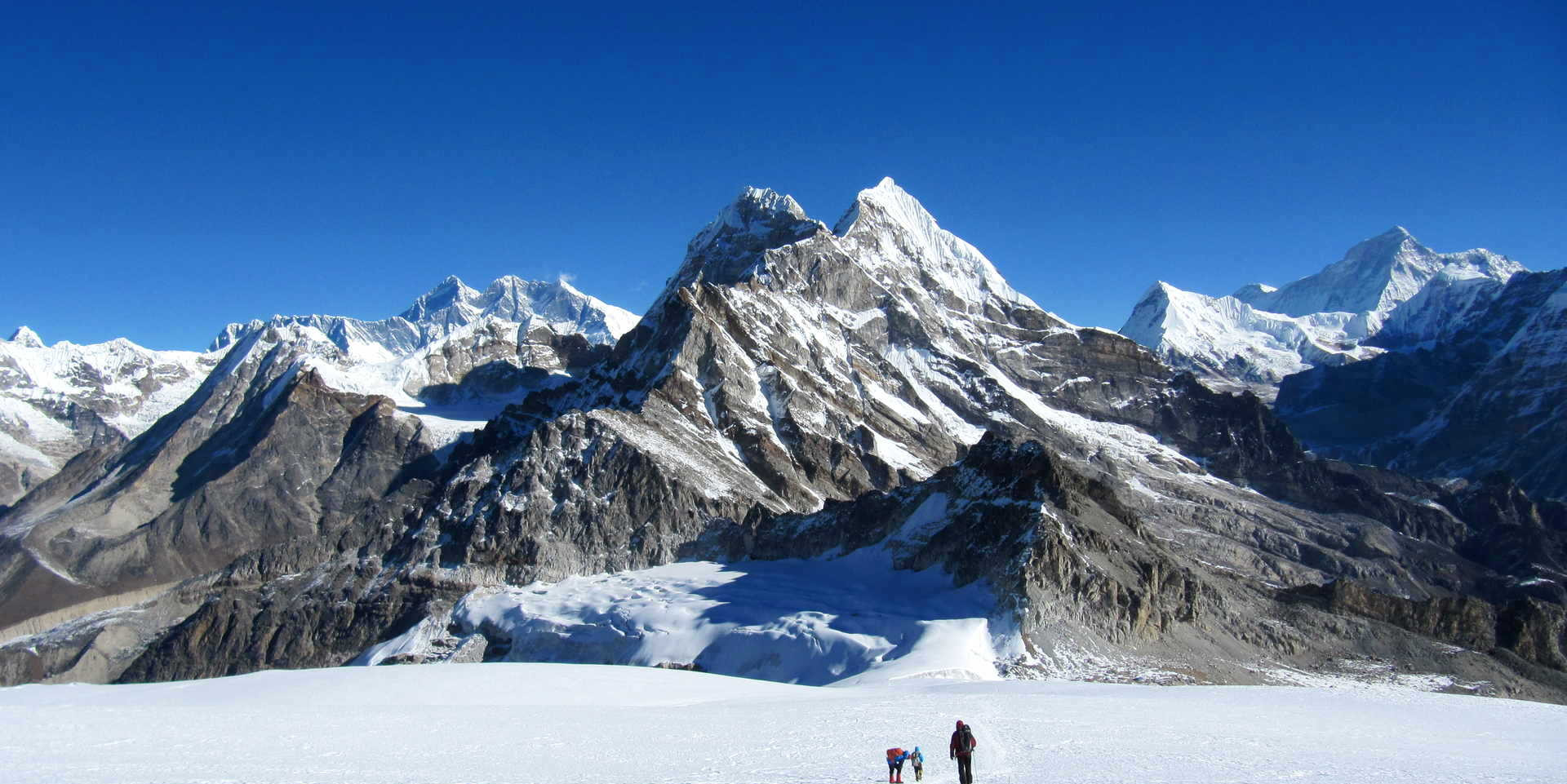
-
Overview: Mera Peak consists of three main summits: Mera North, Mera Central, and Mera South. Most climbers target Mera Central, which is technically straightforward and offers some of the best views. From the summit, climbers are rewarded with spectacular vistas of five of the world's 8,000-meter peaks: Mount Everest, Lhotse, Cho Oyu, Makalu, and Kangchenjunga.
-
Climbing Route: The journey to Mera Peak typically begins with a flight to Lukla, followed by a trek through the less frequented valleys of Hinku and Hongu, which are rich in biodiversity and beautiful alpine scenery. The standard route for climbing Mera Peak starts from Mera La pass and proceeds to the high camp on the Mera Glacier, where climbers set up for the final ascent. The climb from high camp to the summit is mainly a glacier traverse, with a few crevasses and steep sections that require the use of ropes, crampons, and ice axes. The final stretch involves a gradual climb up a snowy slope to the summit ridge, which is exposed but not technically challenging.
-
Difficulty: Mera Peak is considered one of the more accessible peaks for beginners, primarily because it involves less technical climbing than other high-altitude peaks. However, its high elevation requires a good level of physical fitness and proper acclimatization to avoid altitude sickness.
-
Preparation and Safety: Preparation for climbing Mera Peak should include physical training and familiarization with high-altitude trekking. Climbers should also be prepared to use basic mountaineering equipment. While the climb is not technically demanding, the altitude can be challenging, and weather conditions can change rapidly. It’s crucial to have a well-thought-out acclimatization strategy and to be prepared for potential weather-related delays.
-
Why Climb Mera Peak?: Climbing Mera Peak is an excellent opportunity for novice mountaineers to experience high-altitude expedition climbing without the technical complexities found in more formidable peaks. The climb offers a profound sense of achievement and the unique thrill of standing at over 6,000 meters, surrounded by some of the highest mountains on the planet. The approach through the remote Hinku Valley also provides a more immersive experience in the natural and cultural beauty of the Himalayas.
Mera Peak is a superb choice for those looking to broaden their climbing experience with a significant but manageable challenge, set against the backdrop of the stunning Nepalese Himalayas.
Lobuche East
Lobuche East is one of the popular trekking peaks in Nepal's Khumbu region, known for its more challenging climb compared to other beginner-friendly peaks like Island Peak and Mera Peak. At an elevation of 6,119 meters (20,075 feet), Lobuche East offers climbers stunning views of the Everest region and a more technical ascent that appeals to those looking to step up from basic high-altitude trekking.
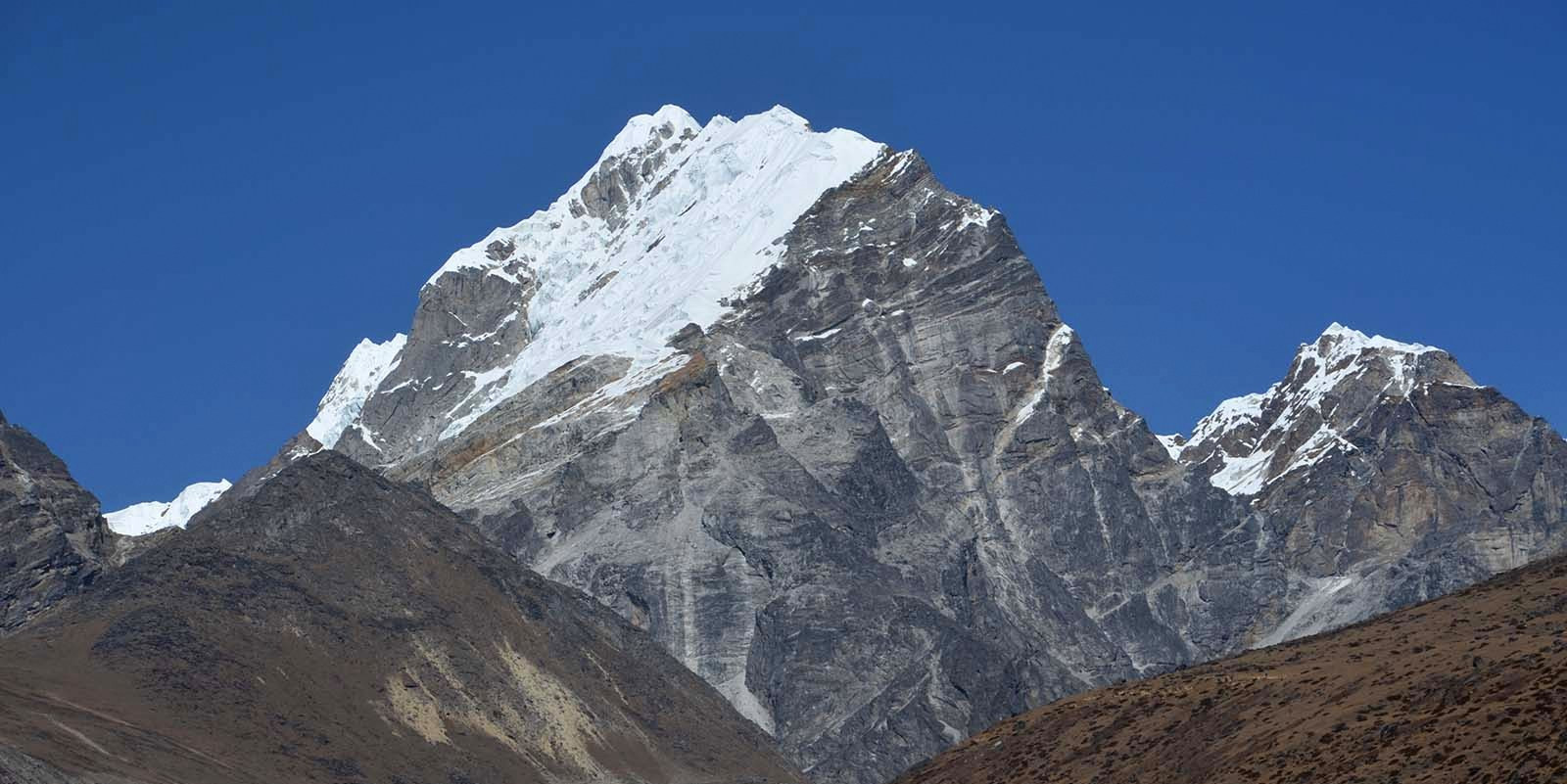
-
Overview: Lobuche East is one of two summits, including Lobuche West, though the latter is more challenging and requires an expedition permit. Lobuche East, however, is accessible with a trekking permit and is often included as part of a broader Everest region trek, making it an excellent goal for climbers wanting to experience a demanding but achievable Himalayan ascent.
-
Climbing Route: The typical ascent for Lobuche East begins at Lobuche village, which is also a stop along the Everest Base Camp trek. Climbers set up base camp on a flat area at around 4,950 meters. From there, the route to the summit includes a high camp at about 5,400 meters, allowing for a shorter summit day. The climb from high camp involves navigating through steep and rocky terrain. Initially, climbers face a somewhat steep climb with loose rocks and a need for careful footing. The route then transitions onto the glacier where climbers need to use crampons, harnesses, and ropes. The final push to the summit involves a sharp, snowy ridge which requires technical climbing skills and presents a considerable challenge.
-
Difficulty: Lobuche East is considered a more technical peak than many other trekking peaks in Nepal. It requires climbers to have good physical conditioning, familiarity with high-altitude environments, and basic to intermediate technical climbing skills. The use of ropes, ice axes, and crampons is essential, especially for the final segment of the climb.
-
Preparation and Safety: Proper preparation for Lobuche East includes not only physical training but also technical skills training, particularly in ice and rock climbing. Safety is paramount, given the peak's higher technical demands and the risks associated with altitude and variable weather conditions. It's advisable to climb with an experienced guide who knows the route and can navigate the challenges of the mountain safely.
-
Why Climb Lobuche East?: Lobuche East offers a more challenging and rewarding experience for climbers looking to test their skills beyond what is required for less technical peaks. The summit provides breathtaking panoramic views of Everest, Lhotse, Nuptse, Ama Dablam, and other Himalayan giants. Climbing Lobuche East is not only about reaching the summit; it's about pushing your limits and expanding your mountaineering skills in one of the most spectacular settings on earth.
For climbers who have some experience and are looking to transition to more technical ascents, Lobuche East is an excellent choice, providing a perfect blend of challenge and reward in the heart of the Himalayas.
Pokalde Peak
Pokalde Peak, also known as Dolma Ri, is one of the less challenging trekking peaks in the Everest region of Nepal. Standing at a modest elevation of 5,806 meters (19,043 feet), it offers a relatively short climb, making it a popular choice for trekkers who want to experience the thrill of peak climbing without extensive technical difficulty.
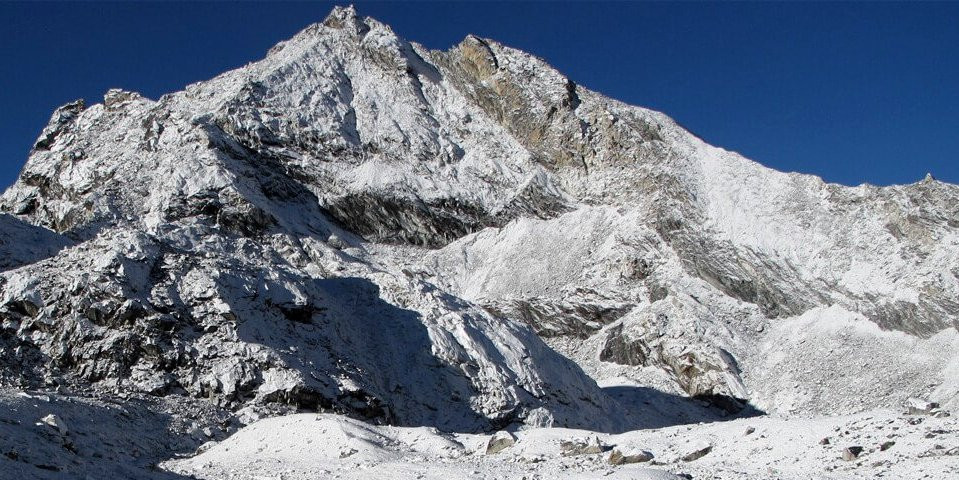
-
Overview: Pokalde Peak lies to the southwest of Mount Everest, close to the well-trodden paths to Everest Base Camp. The peak is nestled near the Kongma La, one of the high passes in the region. Despite its lower height compared to other trekking peaks, the summit of Pokalde provides splendid views of the Himalayan giants, including Makalu, Ama Dablam, and Pumori, alongside Everest.
-
Climbing Route: The typical approach to Pokalde Peak involves a trek from Lukla, following the route towards Everest Base Camp. Trekkers usually divert towards the peak from the village of Dingboche or directly from Gorak Shep, making a base camp near the Kongma La pass. The climb to the summit can often be completed in a few hours from base camp, depending on weather conditions and the physical condition of the climbers. The ascent involves a mix of rocky paths and some scrambling near the summit. While the climb is generally considered non-technical, there are sections where ropes may be used for safety, especially if the route is icy or snow-covered.
-
Difficulty: Pokalde Peak is considered an easy climb relative to other trekking peaks in Nepal. It requires minimal technical climbing skills, making it suitable for trekkers with basic high-altitude trekking experience who wish to attempt their first Himalayan summit.
-
Preparation and Safety: While the climb is not technically demanding, preparation for altitude is essential. Climbers should ensure they are properly acclimatized before attempting the summit, as the effects of altitude can be challenging even on easier climbs. Basic safety gear such as helmets, harnesses, and ropes are recommended, especially for traversing the rocky sections near the summit.
-
Why Climb Pokalde Peak?: Pokalde Peak is an excellent choice for beginner climbers due to its lower altitude and less technical nature. It serves as a fantastic introduction to Himalayan climbing, providing a taste of what it feels like to stand on a summit with breathtaking views of some of the highest mountains in the world. Additionally, its proximity to the Everest Base Camp trek adds to its appeal, allowing trekkers to combine a summit attempt with one of the most famous trekking routes globally.
Pokalde Peak is ideal for those who are looking for a short climbing experience that is accessible yet rewarding, with stunning panoramic vistas of the Himalayan landscape. This peak offers a perfect opportunity for climbers to push their limits gently and safely within the majestic setting of Nepal's Everest region.
Pisang Peak
Pisang Peak is a popular trekking peak in the Annapurna region of Nepal, standing at 6,092 meters (19,987 feet). It offers a perfect blend of moderate climbing and the opportunity to experience the scenic beauty and cultural richness of the Annapurna Circuit, making it a favorite among adventure enthusiasts looking to tackle more than just trekking.
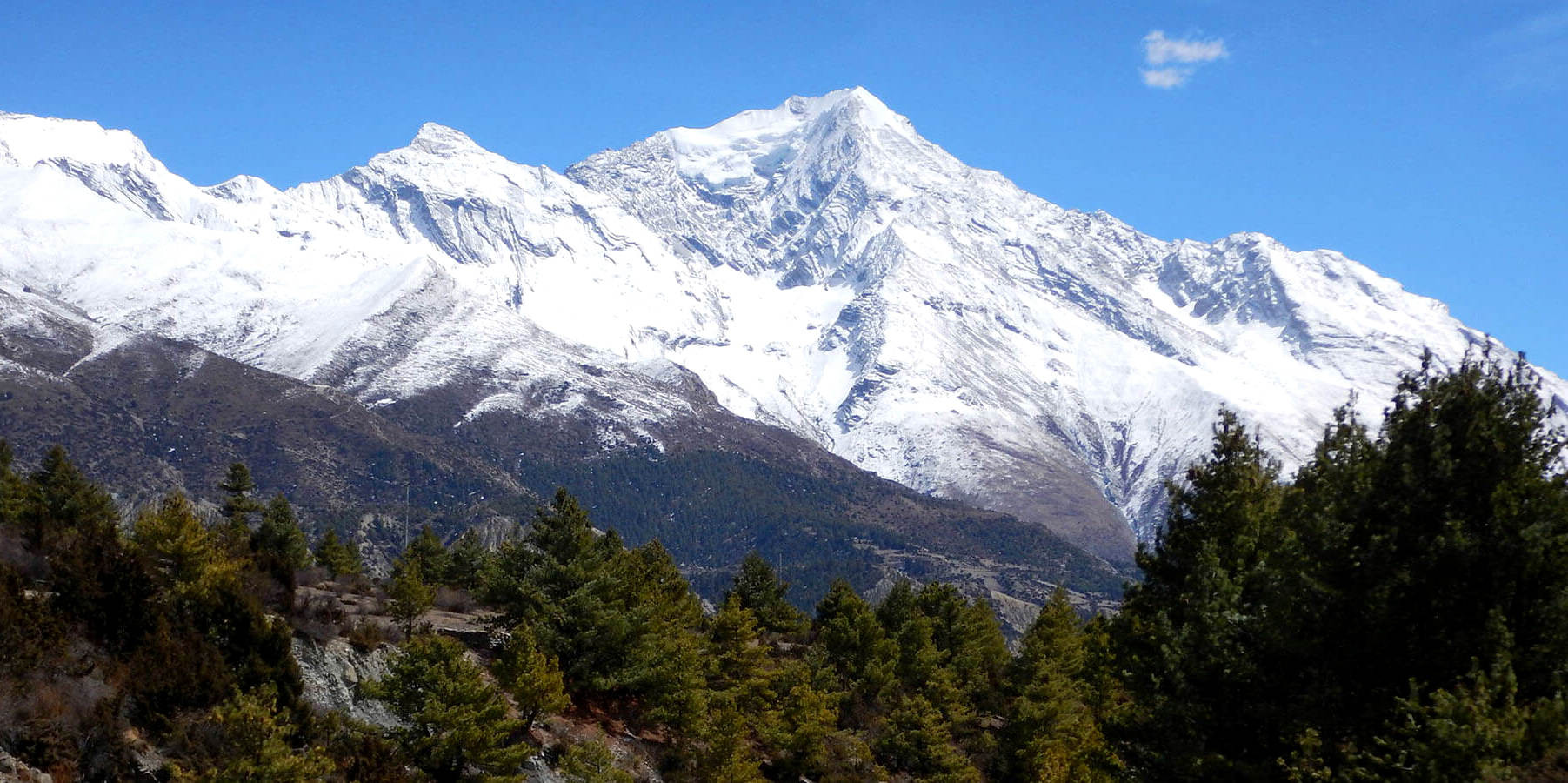
-
Overview: Pisang Peak towers above the village of Pisang and offers a stunning silhouette against the backdrop of the Annapurna Massif. The peak is part of the larger Annapurna mountain range and is positioned roughly between the giants of Annapurna I and Manaslu, both of which are over 8,000 meters. Climbing Pisang Peak involves a combination of trekking through the Annapurna Circuit’s diverse landscapes and a final ascent that tests your climbing skills.
-
Climbing Route: The journey to Pisang Peak typically starts in Besisahar, which is also the starting point for the Annapurna Circuit. Trekkers pass through diverse environments, from subtropical valleys and dense forests to arid high-altitude landscapes, before reaching the village of Pisang. From Pisang, climbers set up a base camp either at Kharka (4,380 meters) or further up near Pisang village, and then establish a high camp at about 5,400 meters to prepare for the summit attempt. The climb from high camp involves navigating through steep slopes and a well-defined ridge leading to the final summit pyramid. The ascent includes sections of snow and ice, requiring the use of crampons, ice axes, and ropes. Despite being considered one of the more technical climbs among trekking peaks, the ascent to Pisang Peak is achievable for climbers with basic alpine climbing skills.
-
Difficulty: Pisang Peak is considered a moderate climb. It is more technical than some of the other trekking peaks, such as Mera Peak or Island Peak, requiring good physical conditioning and basic to intermediate technical climbing skills. The steep snow slopes and the final ridge demand careful attention and proper technique.
-
Preparation and Safety: Preparation for Pisang Peak should include not only physical conditioning and acclimatization but also training in technical skills like rope handling, crampon use, and ice axe techniques. Safety considerations are paramount, particularly due to the variable weather conditions and the technical nature of the summit climb.
-
Why Climb Pisang Peak?: Climbing Pisang Peak offers an enriching experience by combining the adventure of a high-altitude climb with the cultural and scenic trek of the Annapurna Circuit. This peak challenges climbers with its technical requirements while rewarding them with magnificent views of the Annapurna range, including Tilicho Peak and Annapurna II. Additionally, the climb provides a deeper connection to the landscape and culture of the Annapurna region, offering a fuller and more immersive Himalayan adventure.
Overall, Pisang Peak is an excellent choice for those looking to broaden their mountaineering experience with a challenging but manageable ascent, set against one of the most beautiful backdrops in Nepal.
Yala Peak
Yala Peak is a relatively gentle and non-technical climb located in the Langtang Region of Nepal, making it an ideal destination for beginners in high-altitude mountaineering. Standing at an elevation of 5,520 meters (18,110 feet), Yala Peak offers climbers stunning views of Langtang Lirung, Dorje Lakpa, and Shishapangma, one of the 14 eight-thousanders located entirely in Tibet.
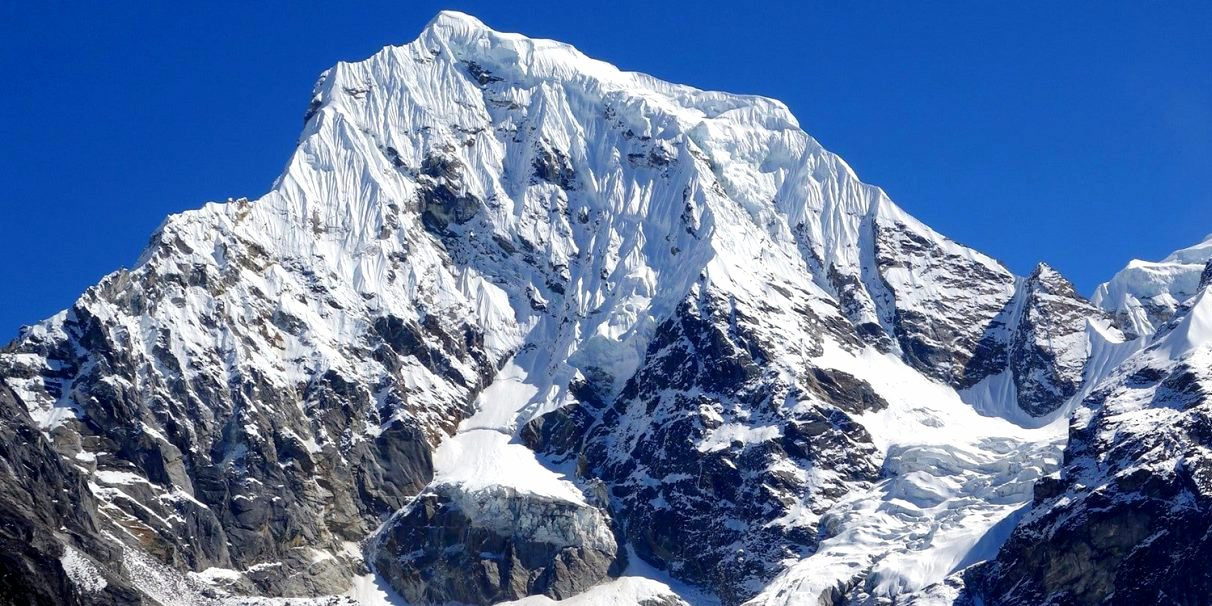
-
Overview: Yala Peak is an excellent choice for those who are new to peak climbing but want to experience the thrill of reaching a Himalayan summit. Its location in the beautiful Langtang Valley, which is less frequented by tourists compared to the Everest or Annapurna regions, provides a more secluded and intimate climbing experience.
-
Climbing Route: The journey to Yala Peak begins in Syabrubesi, a small town that is also the starting point for most treks within the Langtang Valley. From there, trekkers proceed through the Langtang National Park, enjoying the region's rich biodiversity and the unique culture of the local Tamang communities. The trek continues to Kyanjin Gompa, a key resting point where climbers often spend a few days acclimatizing and exploring the local area, including the ancient monastery and cheese factory. From Kyanjin Gompa, climbers move to Yala Base Camp, which serves as the launch point for the summit push. The climb to the summit of Yala Peak is straightforward and involves easy scrambling over rocks and minor ice or snow, making it accessible without advanced technical skills. The final approach to the summit is relatively easy, with some use of ropes for safety, especially if the conditions are snowy or icy.
-
Difficulty: Yala Peak is considered one of the easier trekking peaks in Nepal. It requires no technical climbing skills, making it suitable for beginners who have basic trekking experience and are in good physical condition. It's a great option for those looking to transition from trekking to mountaineering.
-
Preparation and Safety: While Yala Peak is non-technical, good physical conditioning and proper acclimatization are essential to handle the altitude and physical demands of the climb. It is also recommended to be prepared with the right gear for cold and potentially snowy conditions. Safety measures, such as being aware of weather conditions and understanding altitude sickness symptoms, are important.
-
Why Climb Yala Peak?: Climbing Yala Peak is a fantastic way for novices to experience high-altitude climbing in a less demanding environment. The climb offers a rewarding summit experience with panoramic views of spectacular peaks across Nepal and Tibet. Additionally, the trek through Langtang Valley enriches the journey with cultural insights and natural beauty, making it not just a climbing expedition but also a profound travel experience.
Yala Peak is perfect for those who want to enjoy the beauty of the Himalayas in a more relaxed and accessible setting, making it a memorable introduction to high-altitude mountaineering.
Tent Peak (Tharpu Chuli)
Tent Peak, also known as Tharpu Chuli, is a popular trekking peak in the Annapurna region of Nepal. Standing at 5,663 meters (18,575 feet), it is renowned for its spectacular views and accessible climbing route, making it an appealing choice for beginners and intermediate climbers alike.
.jpg)
-
Overview: Tent Peak lies within the heart of the Annapurna Sanctuary, a natural amphitheater surrounded by iconic Himalayan peaks, including Annapurna I, Annapurna South, Hiunchuli, and Machapuchare (Fishtail). The peak provides a perfect opportunity for climbers to immerse themselves in the stunning landscapes of the Annapurna region while testing their mountaineering skills.
-
Climbing Route: The journey to Tent Peak typically begins in Pokhara, followed by a trek through the beautiful Modi Khola valley, which leads up to the Annapurna Base Camp. This trek allows climbers to acclimatize while enjoying the rich biodiversity and the warm hospitality of the Gurung villages along the way. From the Annapurna Base Camp, climbers proceed to Tent Peak Base Camp, often setting up a further camp, the High Camp, to shorten the summit day. The climb to the summit involves navigating a mix of snow and ice slopes with some sections requiring the use of ropes, crampons, and ice axes. The ascent includes a challenging ridge that leads to the summit, offering exhilarating climbing in a spectacular alpine setting.
-
Difficulty: Tent Peak is considered a moderate climb. It is more challenging than some of the easier trekking peaks like Yala Peak but does not require the technical skills needed for more difficult mountains. This makes it a suitable challenge for those who have some basic climbing experience and are looking to push their limits a bit further.
-
Preparation and Safety: Preparation for climbing Tent Peak should include physical conditioning and familiarity with basic alpine climbing techniques, such as using ropes and crampons. Climbers should also focus on acclimatization to prevent altitude sickness. Safety is paramount, and it is essential to monitor weather conditions closely and have a flexible plan to accommodate the unpredictable mountain weather.
-
Why Climb Tent Peak?: Climbing Tent Peak offers an extraordinary adventure for those looking to experience the thrill of mountaineering in a controlled environment. The climb provides panoramic views of the Annapurna range and a satisfying technical challenge without the extremities of higher peaks. Furthermore, the journey through the Annapurna Sanctuary is as much a part of the experience as the climb itself, offering stunning landscapes and insights into the culture of the local communities.
Tent Peak is an excellent choice for climbers seeking to combine a high-altitude challenge with the breathtaking scenery of one of Nepal's most beautiful regions. It's a journey that tests both physical endurance and mental fortitude while rewarding climbers with unforgettable views and a deep sense of accomplishment.
Chulu Far East
Chulu Far East is one of the popular trekking peaks in the Annapurna region of Nepal, known for its moderate difficulty and exceptional panoramic views of the surrounding Himalayan giants. Standing at 6,059 meters (19,880 feet), Chulu Far East provides a challenging yet accessible opportunity for climbers looking to experience an authentic Himalayan expedition.
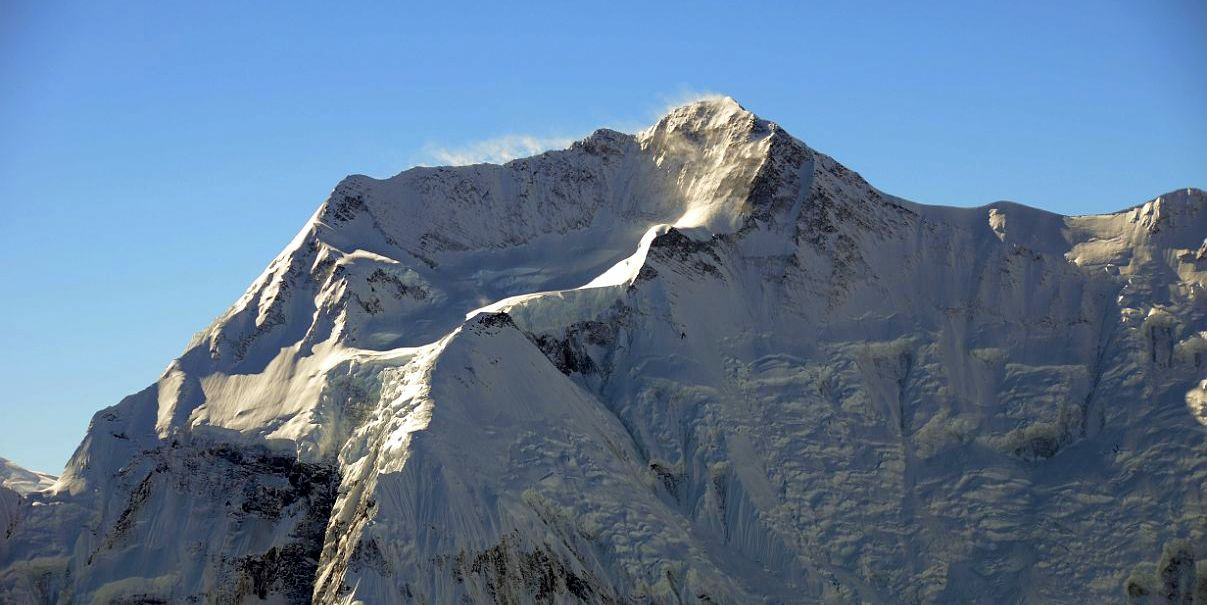
-
Overview: Chulu Far East is part of the larger Chulu massif, which includes several peaks, with Chulu West and Chulu Central being the other prominent ones. The peak offers an excellent introduction to high-altitude climbing, featuring a combination of both technical and non-technical terrain. It attracts climbers who wish to venture beyond the more frequented trekking paths and delve into a more secluded and adventurous part of the Annapurna region.
-
Climbing Route: The typical route for Chulu Far East begins in the village of Manang, a well-known stop along the Annapurna Circuit. From Manang, climbers trek to the Chulu Far East Base Camp, which is set up at around 5,000 meters. Depending on the team's preference and weather conditions, an additional high camp might be established to facilitate a shorter and safer summit day. The ascent involves crossing rocky bands and a significant glacier traverse, requiring climbers to be proficient in using climbing boots, crampons, and ice axes. The climb culminates with a steep snow and ice section leading to the summit ridge, which presents a moderate technical challenge but is highly rewarding, with stunning views of the Annapurna range, Dhaulagiri, and Manaslu.
-
Difficulty: Chulu Far East is considered a moderately challenging peak. It requires climbers to have basic to intermediate alpine climbing skills, including familiarity with technical equipment and techniques. The physical demands and high altitude of the climb also necessitate good physical conditioning and thorough acclimatization.
-
Preparation and Safety: Proper preparation for Chulu Far East should include not only physical training but also technical skills training, especially in ice climbing and crevasse navigation. Safety measures are crucial, as the climb involves glacier travel and steep ascents. Teams should be well-equipped with safety gear and be prepared to adjust their plans based on weather forecasts and physical condition of the group members.
-
Why Climb Chulu Far East?: Climbing Chulu Far East is an enriching experience that combines adventurous climbing with the breathtaking natural beauty of the Annapurna region. It offers a more secluded climb than some other popular peaks, providing a sense of solitude and immersion in nature. The summit rewards climbers with one of the most spectacular panoramas in the Himalayas, making it a memorable climb for those looking to explore beyond the typical trekking routes.
Chulu Far East is an excellent choice for climbers seeking to enhance their mountaineering skills on a more technical peak while enjoying the incredible landscapes and rich cultural experiences of the Annapurna region.
Tips for Climbing in Nepal for Beginners
Climbing in Nepal can be an awe-inspiring experience, especially for beginners venturing into the world of high-altitude mountaineering for the first time. Here are some essential tips to ensure a safe, enjoyable, and successful climb:
-
Choose the Right Peak: Start with a peak that matches your current fitness level and experience. For beginners, peaks like Island Peak, Mera Peak, and Yala Peak offer a good balance of challenge and accessibility.
-
Get Proper Training: Before heading to Nepal, participate in a mountaineering course to learn basic skills such as using crampons, ice axes, and ropes. Understanding how to navigate glaciers and crevasses is crucial for your safety.
-
Acclimatize Adequately: Altitude sickness can affect anyone, regardless of fitness level. Spend several days acclimatizing to the high altitude before attempting a summit. Follow the “climb high, sleep low” principle to help your body adjust.
-
Hire a Reputable Guide: Especially for your first climbing experience in Nepal, a knowledgeable and experienced guide can be invaluable. They not only provide expertise and navigation but also offer insights into the local culture and environment.
-
Invest in Quality Gear: Ensure you have the appropriate gear for your climb. This includes a sturdy pair of mountaineering boots, layers of thermal clothing, a high-quality down jacket, gloves, a hat, UV protection sunglasses, and a durable backpack. Renting equipment in Kathmandu or Pokhara is an option, but it’s crucial to check the quality and fit beforehand.
-
Pack Essentials: Include a first aid kit, sunscreen, lip balm with SPF, water purification tablets, and a sleeping bag suitable for freezing temperatures. Don’t forget personal medications and possibly altitude sickness medication, as advised by a physician.
-
Stay Hydrated and Nourished: Dehydration can exacerbate the effects of altitude sickness. Drink plenty of water and eat meals high in calories to maintain your energy levels during the climb.
-
Plan Your Climb During Optimal Seasons: The best times to climb in Nepal are during the pre-monsoon (spring, March to May) and post-monsoon (autumn, October to November) seasons. These periods offer more stable weather conditions and clearer skies.
-
Understand and Respect the Local Culture: Nepal has a rich cultural tapestry. Respect local customs and traditions. Learn a few basic phrases in Nepali to communicate better with locals and show respect.
-
Stay Flexible: Mountain weather can be unpredictable. Be prepared to adjust your climbing schedule based on weather conditions and your physical health. Safety should always come first.
By following these tips, beginners can maximize their chances of a successful and rewarding climbing experience in Nepal. Climbing in this region not only tests your physical limits but also offers a profound connection with nature and a deep appreciation for the majestic beauty of the Himalayas.
Ideal Time for Climbing in Nepal for Beginners
Climbing in Nepal can be broadly categorized across four main seasons, each offering different conditions that affect the climbing experience. Here's a detailed look at what climbers can expect in each season:
Spring (March to May)
-
Advantages: Spring is arguably the best season for climbing in Nepal. The weather gradually warms, which helps to stabilize the high-altitude environment, making it safer and more comfortable for climbing. The snow from winter melts, clearing paths, although higher altitudes will still have significant snow cover perfect for mountaineering.
-
Experience: The landscape bursts with color as rhododendrons and other wildflowers bloom, enhancing the scenic beauty of trekking routes. This is also the busiest season for expeditions, especially to Everest, with bustling base camps and lively trails.
Summer/Monsoon (June to September)
-
Advantages: The trails are less crowded, and the landscape is lush and vibrant with greenery due to the rain.
-
Challenges: The monsoon season brings heavy rainfall, particularly in the lower regions, making trails slippery and muddy, which can be hazardous. Visibility is also reduced due to cloud cover and fog, and there are increased risks of landslides and leeches on the trail. High passes and peaks may still be accessible, as some areas above certain altitudes can be in the rain shadow, particularly in regions like Mustang or Dolpo.
Autumn (October to November)
-
Advantages: Autumn is another peak season for trekking and climbing in Nepal. The post-monsoon climate means clearer skies and excellent visibility. Temperatures are cool but not yet harsh, providing comfortable climbing conditions.
-
Experience: The landscapes are still lush early in the season, and as autumn progresses, the clearer skies offer some of the best mountain views, making it a popular time for photographers and climbers alike.
Winter (December to February)
-
Advantages: Winter in Nepal is less crowded, offering a more solitary experience on the trails. The lower altitudes are usually dry and clear, although it can be quite cold.
-
Challenges: High-altitude climbs are more challenging due to the cold temperatures, snow, and ice. Daylight hours are shorter, and many teahouses or lodges in remote areas may close.
Choosing the right season for climbing in Nepal depends on a climber's experience level, preparedness for weather conditions, and personal preferences regarding crowd levels and landscape aesthetics. Each season has its charms and challenges, providing different perspectives of Nepal's majestic landscapes.
For novices, mountain climbing in Nepal presents a once-in-a-lifetime chance to visit some of the most famous peaks on the planet. First-time visitors find spring (March to May) and fall (October to November) to be the ideal weather cycles. Essential is good equipment, learning needed mountaineering knowledge, and physical training. Moreover, interacting with well-known guides will help to enhance the enjoyment of the trip and to keep it safe. More than just reaching summits, climbing in Nepal is about accepting challenges, embracing local culture, and appreciating the magnificent beauty of the Himalayas. Whether you want personal development or thrill, Nepal's peaks offer a once-in-a-lifetime experience.
FAQs for Climbing in Nepal for Beginners
Q: What are the best peaks in Nepal for beginner climbers?
A: For beginners, peaks like Island Peak, Mera Peak, Lobuche East, and Yala Peak offer manageable challenges with minimal technical requirements. These peaks provide a good introduction to high-altitude climbing while allowing climbers to build confidence and skills.
Q: Do I need prior climbing experience to climb in Nepal?
A: Prior climbing experience is not strictly necessary for some of the beginner-friendly peaks; however, basic trekking experience and good physical fitness are essential. Some peaks like Lobuche East and Chulu Far East may require familiarity with mountaineering equipment and techniques.
Q: What is the best time to climb in Nepal?
A: The best times to climb in Nepal are during the pre-monsoon (spring, from March to May) and post-monsoon (autumn, from September to November) seasons. These months offer the most stable weather conditions and clearer skies.
Q: What equipment do I need for climbing in Nepal?
A: Basic equipment includes trekking boots, a warm sleeping bag, a durable backpack, layers of thermal clothing, a down jacket, and personal climbing gear such as a harness, crampons, ice axe, and sometimes a helmet. Rental options are available in major trekking hubs like Kathmandu and Pokhara.
Q: How do I prepare physically for climbing in Nepal?
A: Preparation should include cardiovascular exercises such as running and cycling, strength training, hiking to acclimate your body to uneven terrain, and altitude training if possible. Stamina and endurance are key to a successful climb.
Q: Is it necessary to hire a guide for climbing in Nepal?
A: Yes, it is highly recommended, and sometimes mandatory, to hire a guide for climbing in Nepal. Guides are essential for navigating the routes, ensuring safety, managing logistics, and providing insights into local culture and environment.
Q: How do I manage altitude sickness?
A: Proper acclimatization is crucial in managing altitude sickness. This involves gradual ascent, staying hydrated, eating a balanced diet, and avoiding alcohol and tobacco. Medications like Acetazolamide can be used as a preventive measure under the guidance of a doctor.
Q: How long does it take to climb a peak in Nepal?
A: It varies depending on the peak but typically ranges from one to three weeks, including acclimatization stops. Shorter treks like those to Yala Peak might take less time, while climbs incorporating the Annapurna Circuit or Everest Base Camp trek can take longer.
Q: Can I climb solo in Nepal?
A: Solo climbing is strongly discouraged, especially for beginners, due to safety reasons. Most trekking peaks require permits that can only be obtained through registered trekking agencies that provide a guide.
Q: What are the costs involved in climbing in Nepal?
A: Costs can vary widely depending on the peak, duration of the climb, the inclusion of guides and porters, travel arrangements, and personal spending habits. Generally, a climbing expedition can range from $1,000 to over $5,000. This includes permits, guides, accommodation, and food along the trek.
For the Nepal tour, please click here.
If you are looking for different kinds of Nepal Tours or Trekking Packages, feel free to contact us.
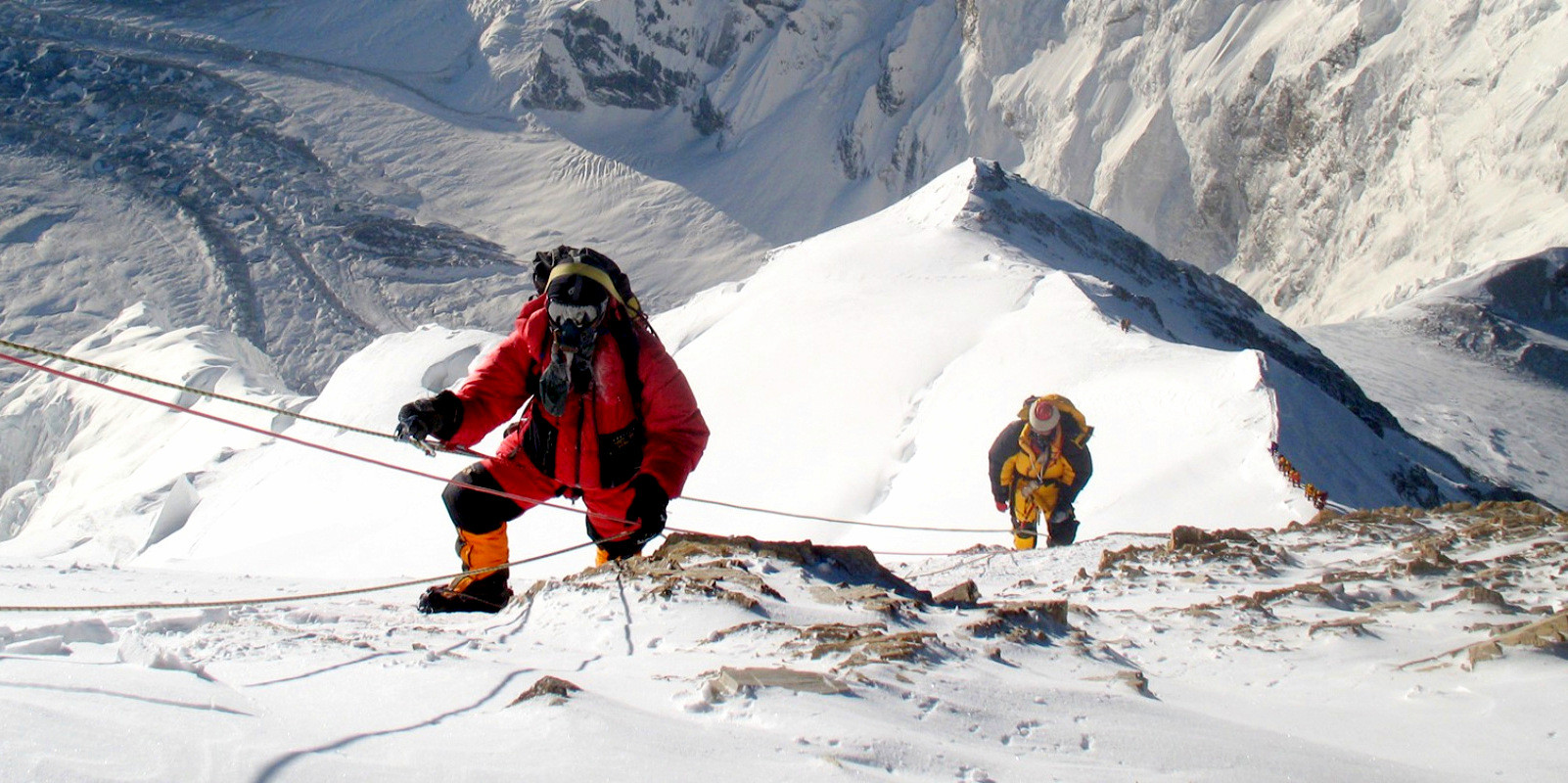

.jpg)





.jpg)
